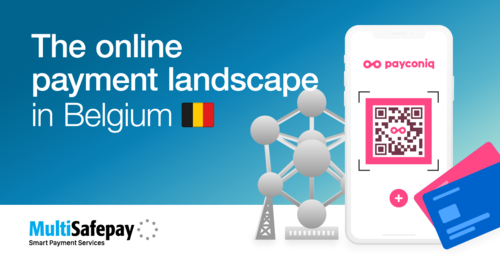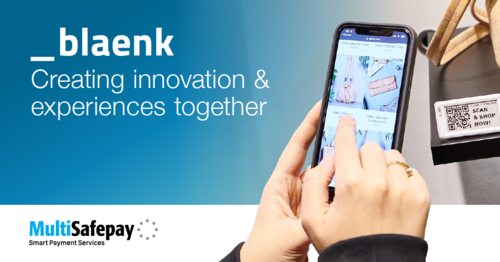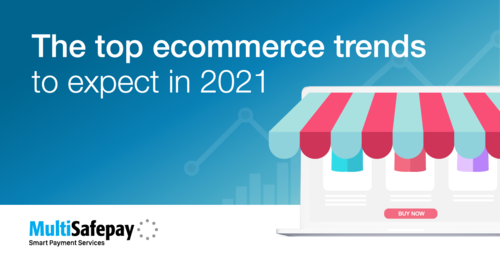Even though Germany is known for its heavy cash use, the German ecommerce market is growing rapidly and is estimated to become one of the largest in Europe. With Germany being Europe’s largest economy (GDP $3.9 trillion in 2019) and larger in population than France or the UK (82.79m in 2020), this market is worth taking a look at.
After big players like Amazon have become successful institutions in Germany and given that 50% of all online purchases in Germany are cross-border purchases, the potential for merchants wanting to expand their business to Germany is big. This blog is going to cover everything merchants need to know about the German online payment landscape, the most preferred payment methods, the behavior of the typical German customer and the golden rules for a successful expansion to Germany.
The shift from cash to ecommerce
In Germany it is still not uncommon to be confronted with cash only payments, especially at smaller establishments, like bakeries, neighborhood restaurants and corner shops. The use of debit and credit cards have, in fact, only emerged as commonly accepted payment methods over the last few years. Most studies conducted from previous years concluded that the vast majority of Germans intended to still use cash in the future.
Since the Covid-19-pandemic cash payments are also in Germany actively discouraged. Consequently, most establishments and stores started accepting card payments, while many are even accepting only cards now.
On our blog on the effects of Covid-19 on ecommerce, we pointed out in detail that the pandemic accelerated the shift from retail to ecommerce by up to five years - and Germany has been no exception. While Germans traditionally preferred cash payments, this shift along with the rising call for contactless payments, changed consumer behaviors. The majority of Germans stated that they got used to the new processes of online-shopping and will stick to them in the future.
The online payment landscape in Germany
The payment method landscape in Germany is diverse. Over the last ten years however, the most dominant way for online payments in Germany has been open invoices, especially in retail. While invoice payments were still the most dominant method in 2019, recent statistics show that throughout 2020 digital wallets such as PayPal and Apple Pay emerged as the newest number one trend for online payments in Germany. Following Statista, even 50% of all respondents stated that they prefer to pay with PayPal when online shopping.
Driven predominantly by the rising use of smartphones and the emergence of digital wallet payment options, the mobile commerce market in Germany has found be expanding at a double-digit rate, especially throughout younger generations. A study by the Bundesbank from 2017 showed that in particular, young Germans are actively looking for new payment alternatives.
Studies conducted have shown that overall the most preferred online payment methods in Germany are PayPal, Giropay, SEPA Direct Debit, SOFORT, Klarna and Apple Pay .
The profile of the German online shopper
When you want to expand your market to new countries, it is always important to know your audience. It might sound like a cliché but for successful operations in Germany, punctuality and efficiency are key. Following the Statista Global Consumer Survey, the convenience of a home delivery is most important for the average German customer when it comes to online shopping, followed by fast availability, lower prices and convenient and seamless shopping processes.
When it comes to online payments, several studies have shown that 72% of German shoppers have one payment method they clearly prefer over others, while 11% even state they would only complete a purchase if their preferred payment method is available.
Generally speaking, German consumers are particularly conscientious shoppers. They mostly know what they want, compare prices, check different shops and do not tend to act on impulses. If you do not offer their preferred payment methods, they might look to find it in a different shop.
Rules for successful expansion to Germany
Based on the given statistics and characteristics of the average German online shopper, we can conclude 3 golden rules merchants should follow when planning to expand their business to Germany.
1. Let customers choose their favorite payment method
One of the main reasons why German customers abandon their cart is because they cannot pay with known and trusted payment methods. With MultiSafepay you can select from a mix of over 30 payment methods, which also covers the ones mostly used in Germany. Next to international digital wallet options such as PayPal and Apple Pay we also offer a whole range of local German payment methods, like SOFORT-Banking, Giropay and Request to Pay in cooperation with Deutsche Bank.
2. Gain trust with BNPL-solutions
Given that Buy-Now Pay-Later (BNPL) solutions are particularly popular in Germany, this is the go-to way to win the trust of German online shoppers. On the one hand, they can be assured to actually receive the items they pay for and on the other hand, this concept conveys the familiar sensation of a retail store (being able to try something and potentially send it back without having to pay before). With MultiSafepay you can select various BNPL and invoicing methods in our comprehensive Billing Suite.
3. Provide a safe and easy checkout
Offering safe and secure payment processes is one thing, but signalizing this to consumers to avoid mistrust is a different thing. Besides functions for fraud protecting, such as highest PCI DSS standards and advanced fraud filter setting, Multisafepay is a direct acquirer and processor for credit cards, such as VISA and Mastercard. Not relying on third parties to process payments means no directing to external pages or additional window pop-ups - which makes customers perceive maximal safety.
The introduction of Strong Customer Authentication (SCA) as of January 2021 adds to this perception. Besides safeguarding credit card payments, SCA offers new user-friendly and intuitive ways for verification (e. g. pins and passwords), helping to minimize cart abandonments and drop-offs in conversion.
Summing up
Generally speaking, the potential for merchants wanting to expand their business to Germany is promising, especially in light of the recent online shopping growth as well as the increased use of alternative online payment methods. If you follow the essential rules laid out in this blog and keep the mentality of German customers in mind, your foundation to build up a German clientele is set.
Do you have any further questions about expanding your shop to Germany or need assistance?


